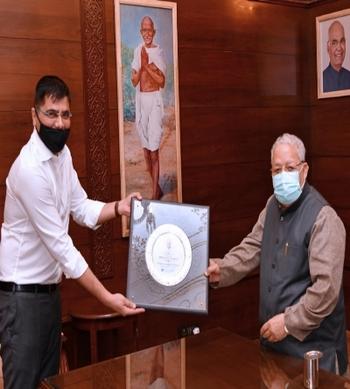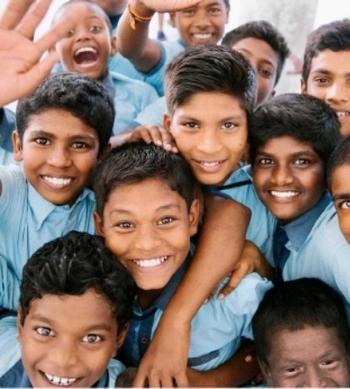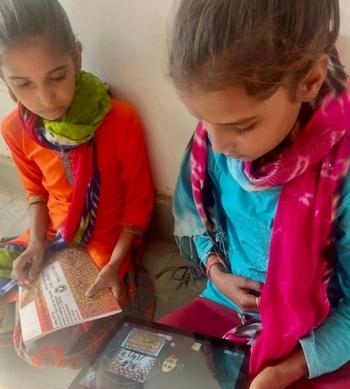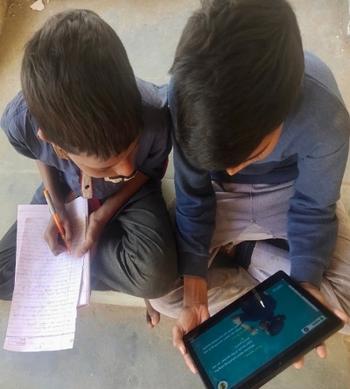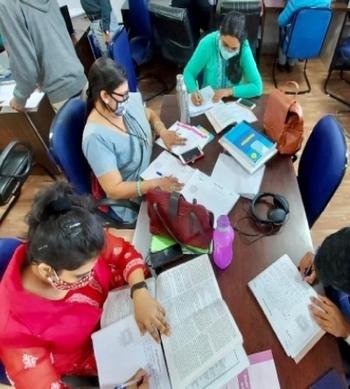CBSE Class 9 Social Science Syllabus 2022-23
The Central Board of Secondary Education (CBSE) has recently published the revised syllabus for CBSE Class 9 Social Science on its official website. This syllabus is applicable for the academic year 2022-2023 and includes several changes compared to the previous version. Notably, certain topics have been eliminated from the curriculum, so it is crucial for students to be aware of the revised syllabus and focus on the included chapters. To access and download the revised CBSE Class 9 Social Science syllabus, students can refer to the provided article. It is advisable for students to thoroughly study the revised syllabus and adhere to it accordingly.
Skip to
CBSE Class 9 Social Science Syllabus Course Structure
(Code No. 087)
Theory Paper
|
Unit No |
Units |
Marks |
|
1 |
India and the Contemporary World -II |
20 |
|
2 |
Contemporary India - II |
20 |
|
3 |
Democratic Politics -II |
20 |
|
4 |
Understanding Economic Development |
20 |
|
TOTAL |
80 |
Download CBSE Class 9th Geography Syllabus
Download CBSE Class 9th Economics Syllabus
Download CBSE Class 9th History Syllabus
Download CBSE Class 9th Political Science Syllabus
CBSE Class 9 Social Science Course Content
Unit 1: India and the Contemporary World – 1 |
|
|
Themes |
Learning Objectives |
|
Section 1: Events and Processes: (All the three themes are compulsory) |
In each of the themes in this unit students would get familiarized with distinct ideologies, extracts of speeches, political declarations, as well as the politics of caricatures, posters and engravings. Students n each of the themes in this unit students would get familiarized with distinct ideologies, extracts of speeches, political declarations, as well as the politics of caricatures, posters and engravings. Students would learn how to interpret these kinds of historical evidences. |
1. The French Revolution:· French Society During the Late Eighteenth Century · The Outbreak of the Revolution · France Abolishes Monarchy and Becomes a Republic · Did Women have a Revolution? · The Abolition of Slavery The Revolution and Everyday Life |
· Familiarize with the names of people involved, the different types of ideas that inspired the revolution, the wider forces that shaped it. · Know the use of written, oral and visual material to recover the history of revolutions. |
2. Socialism in Europe and the Russian Revolution:· The Age of Social Change · The Russian Revolution · The February Revolution in Petrograd · What Changed after October? · The Global Influence of the Russian Revolution and the USSR |
· Explore the history of socialism through the study of Russian Revolution. · Familiarize with the different types of ideas that inspired the revolution. |
3. Nazism and the Rise of Hitler:· Birth of the Weimar Republic · Hitler’s Rise to Power · The Nazi Worldview · Youth in Nazi Germany · Ordinary People and the Crimes Against Humanity |
· Discuss the critical significance of Nazism in shaping the politics of modern world. · Get familiarized with the speeches and writings of Nazi Leaders. |
|
Section 2: Livelihoods, Economies and Societies: |
|
4. Forest Society and Colonialism:· Why Deforestation? · The Rise of Commercial Forestry · Rebellion in the Forest · Forest Transformations in Java |
· Discuss the social and cultural world of forest communities through the study of specific revolts. · Understand how oral traditions can be used to explore tribal revolts. · Highlight varying patterns of developments within pastoral societies in different places. · Analyze the impact of colonialism on forest societies, and the implication of scientific forestry. · Show the different processes through which agrarian transformation may occur in the modern world. |
5. Pastoralists in the Modern World:· Pastoral Nomads and their Movements · Colonial Rule and Pastoral Life · Pastoralism in Africa |
· Analyze the impact of modern states, marking of boundaries, processes of sedentarization, contraction of pastures, and expansion of markets on pastoralism in the modern world. |
Unit 2: Contemporary India – 1 |
|
|
Themes |
Learning Objectives |
1. India· Location · Size · India and the World · India’s Neighbours |
· Identify the location of India in the Indian subcontinent. |
2. Physical Features of India:· Major Physiographic Divisions – Himalayan Mountains, Northern Plains, Peninsular Plateau, Indian Desert, Coastal Plains, Islands |
· Understand the major landform features and the underlying geological structure; their association with various rocks and minerals as well as nature of soil types. |
3. Drainage:· Concept · Drainage Systems in India · The Himalayan Rivers - Ganga and Brahmaputra River System · The Peninsular Rivers- Narmada Basin, Tapti Basin, Godavari Basin, Mahanadi Basin, Krishna Basin, Kaveri Basin · Lakes · Role of Rivers in the Economy · River Pollution |
· Identify the river systems of the country and explain the role of rivers in the human society |
4. Climate:· Concept · Climatic Controls · Factors influencing India’s climate –· Latitude, Altitude, Pressure and Winds (excluding Jet Streams and Western Cyclonic Disturbances and related figures) · The Seasons – Cold Weather Season, Hot Weather Season, Advancing Monsoon, Retreating/Post Monsoons · Distribution of Rainfall · Monsoon as a unifying bond |
· Identify various factors influencing the climate and explain the climatic variation of our country and its impact on the life of the people. · Explain the importance and unifying role of monsoons. |
5. Natural Vegetation and Wild Life:· Types of Vegetation – Tropical Evergreen Forests, Tropical Deciduous Forests, Thorn Forests and Shrubs, Montane Forests, Mangrove Forests · Wild Life |
· Explain the nature of diverse flora and fauna as well as their distribution. · Develop concern about the need to protect the biodiversity of our country. |
6. Population:· Population Size and Distribution –India’s Population Size and Distribution by Numbers, India’s Population Distribution by Density · Population Growth and Processes of Population Change – Population Growth, Processes of Population Change/Growth |
· Analyse the uneven nature of population distribution and show concern about the large size of our population. |
Unit 3: Democratic Politics – 1 |
|
|
Themes |
Learning Objectives |
1. What is Democracy? Why Democracy?· What is Democracy? · Features of Democracy · Why Democracy? · Broader Meanings of Democracy |
· Develop conceptual skills of defining democracy. · Understand how different historical processes and forces have promoted democracy. · Develop a sophisticated defense of democracy against common prejudices. · Develop a historical sense of the choice and nature of democracy in India. |
2. Constitutional Design:· Democratic Constitution in South Africa · Why do we need a Constitution? · Making of the Indian Constitution · Guiding Values of the Indian Constitution |
· Understand the process of Constitution making. · Develop respect for the Constitution and appreciation for Constitutional values. · Recognize Constitution as a dynamic and living document. |
3. Electoral Politics:· Why Elections? · What is our System of Elections? · What makes elections in India democratic? |
· Understand representative democracy via competitive party politics. · Familiarize with Indian electoral system. · Reason out for the adoption of present Indian Electoral System. · Develop an appreciation of citizen’s increased participation in electoral politics. · Recognize the significance of the Election Commission. |
4. Working of Institutions:· How is the major policy decision taken? · Parliament · Political Executive · The Judiciary |
· Get an overview of central governmental structures. · Identify the role of Parliament and its procedures. · Distinguish between political and permanent executive authorities and functions. · Understand the parliamentary system of executive’s accountability to the legislature. · Understand the working of Indian Judiciary. |
5. Democratic Rights:· Life without Rights · Rights in a Democracy · Rights in the Indian Constitution · Expanding scope of rights |
· Recognize the need for rights in one’s life. · Understand the availability /access of rights in a democratic system/government. · Identify and be able to comprehend the Fundamental Rights given by the Indian Constitution to its citizens. · Create awareness regarding the process of safeguarding rights. |
Unit 4: Economics |
|
|
Themes |
Learning Objectives |
1. The Story of Village Palampur:· Overview · Organization of Production · Farming in Palampur · Non-farm activities in Palampur |
· Familiarize with basic economic concepts through an imaginary story of a village. |
2. People as Resource:· Overview · Economic Activities by Men and Women · Quality of Population · Unemployment |
· Understand the demographic concepts. · Understand how population can be an asset or a liability for the nation. |
3. Poverty as a Challenge:· Overview · Two typical cases of Poverty · Poverty as seen by Social Scientists · Poverty Estimates · Vulnerable Groups · Interstate Disparities · Global Poverty Scenario · Causes of Poverty · Anti-Poverty measures · The Challenges Ahead |
· Understand poverty as a challenge. · Identify vulnerable group and interstate disparities. · Appreciate the initiatives of the government to alleviate poverty. |
4. Food Security in India:· Overview · What is Food Security? · Why Food Security? · Who are food insecure? · Food Security in India · What is Buffer Stock? · What is the Public Distribution System? · Current Status of Public Distribution System · Role of Cooperatives in food security |
· Understand the concept of food security. · Appreciate and analyse the role of government in ensuring food supply. |
Class 9 Social Science Syllabus: Project Work 2022-2023: 05 Marks
1. Every student has to compulsorily undertake one project on Disaster Management
2. Objectives: The main objectives of giving project work on Disaster Management to the students are to:
a. create awareness in them about different disasters, their consequences and management
b. prepare them in advance to face such situations
c. ensure their participation in disaster mitigation plans
d. enable them to create awareness and preparedness among the community.
3. The project work should also help in enhancing the Life Skills of the students.
4. If possible, various forms of art may be integrated in the project work.
5. In order to realize the expected objectives completely, it would be required of the Principals / teachers to muster support from various local authorities and organizations like the Disaster Management Authorities, Relief, Rehabilitation and the Disaster Management Departments of the States, Office of the District Magistrate/ Deputy Commissioners, Fire Service, Police, Civil Defense etc. in the area where the schools are located.
6. The distribution of marks over different aspects relating to Project Work is as follows:
S. No. | Aspects | Marks |
a | Content accuracy, originality and analysis | 2 |
b | Presentation and creativity | 2 |
c | Viva Voce | 1 |
7. The project carried out by the students should subsequently be shared among themselves through interactive sessions such as exhibitions, panel discussions, etc.
8. All documents pertaining to assessment under this activity should be meticulously maintained by the schools.
9. A Summary Report should be prepared highlighting:
- objectives realized through individual work and group interactions;
- calendar of activities;
- innovative ideas generated in the process;
- list of questions asked in viva voce.
10. It is to be noted here by all the teachers and students that the projects and models prepared should be made from eco-friendly products without incurring too much expenditure.
11. The Project Report can be handwritten or digital.
12. The Project Work needs to enhance cognitive, affective and psychomotor skills of the learners. It will include self-assessment and peer assessment, and progress of the child in project-based and inquiry-based learning, art integrated activities, experiments, models, quizzes, role plays, group work, portfolios, etc., along with teacher assessment. (NEP-2020)
(The Project work can culminate in the form of Power Point Presentation/ Exhibition/ Skit/ albums/ files/ song and dance or culture show / storytelling/ debate/ panel discussion, paper presentation and whichever is suitable to Visually Impaired Candidates.)
13. The record of the project work (internal assessment) should be kept for a period of three months for verification, if any.
CBSE Class 9 Social Science Syllabus: Internal Assessment - 20 Marks
MARKS | DESCRIPTION | |||||
Periodic Assessment | 10 |
| ||||
Portfolio | 5 |
| ||||
Subject Enrichment Activity | 5 | Project Work |
CBSE Class 9 Social Science Syllabus: PRESCRIBED BOOKS
1.India and the Contemporary World - I (History) - Published by NCERT
2. Contemporary India - I (Geography) - Published by NCERT
3. Democratic Politics - I Published by NCERT
4. Economics - Published by NCERT
5. Together, Towards a Safer India - Part II, a textbook on Disaster Management for Class IX - Published by CBS
Conclusion
In conclusion, studying social studies in Class 9 CBSE Board provides students with a comprehensive understanding of various aspects of society, history, economics, and politics. This subject equips students with the knowledge and skills to analyze and interpret the world around them. Here are a few key takeaways from the Class 9 CBSE Board Social Studies curriculum.
FAQs
1.How can I improve my understanding of social studies concepts?
Read the textbook thoroughly and take notes. Use additional reference books or online resources for more information. Discuss concepts with classmates or teachers to gain different perspectives. Engage in discussions and debates on social issues to enhance critical thinking.
2.How can I remember historical events and dates?
Create a timeline or flowchart of important events and dates. Use mnemonic devices or storytelling techniques to remember facts. Practice writing short summaries or essays on historical events. Engage in group discussions or quizzes to reinforce your knowledge.
3.How can I prepare for the social studies exams effectively?
Make a study schedule and allocate time for each topic. Revise regularly by reviewing notes, diagrams, and key points. Solve previous years' question papers to understand the exam pattern. Practice writing answers within the given time limit to improve speed and accuracy.
Download CBSE Class 9th Social Science Syllabus PDF

MissionGyan Team
We aim to eradicate the education gap and serve equal and free education to all with the help of skilled and expert volunteers and teachers.

